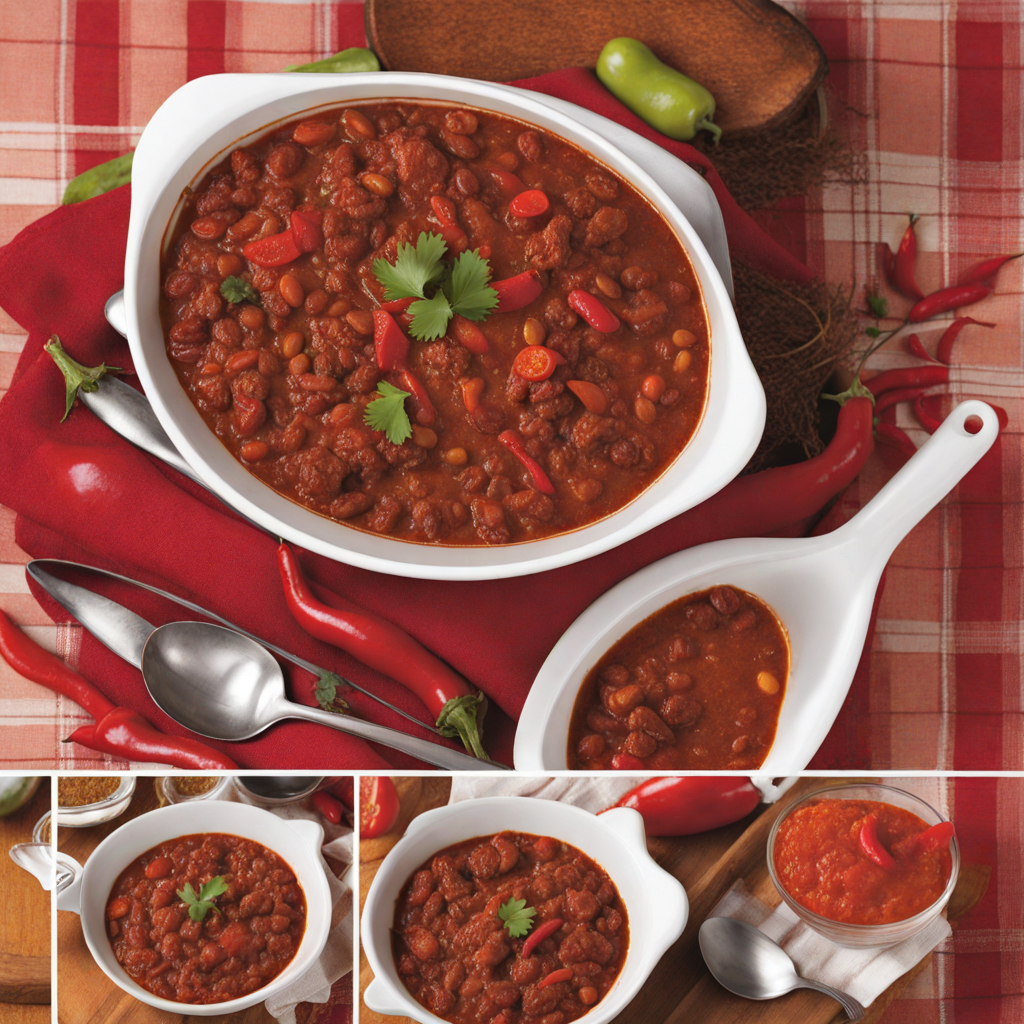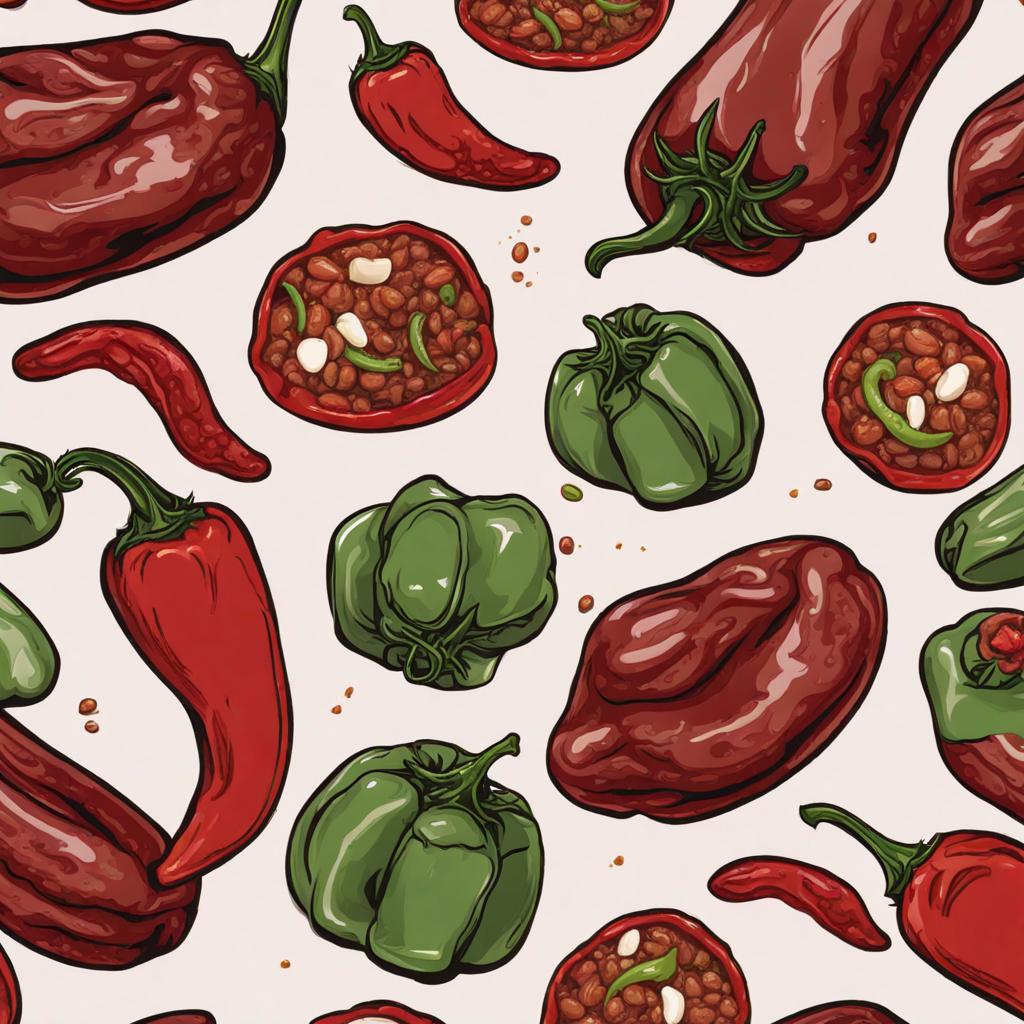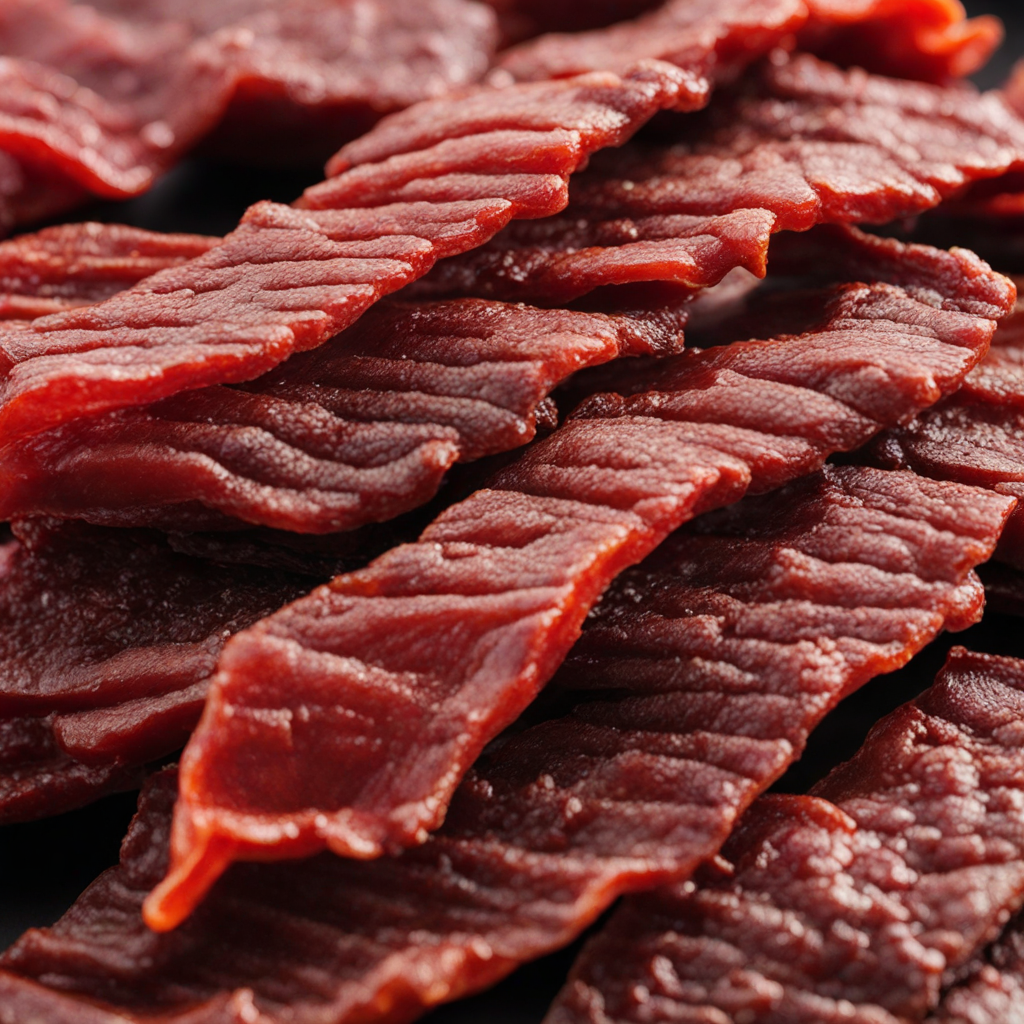Chili Con Carne
Chili Con Carne is a hearty and robust dish that embodies the spirit of American comfort food. At its core, the dish features ground beef as the primary protein, simmered to tender perfection. The meat is typically combined with a medley of spices, including chili powder, cumin, and garlic, which infuse the dish with a rich, savory flavor profile. The addition of tomatoes—either fresh or canned—provides a tangy sweetness that balances the spices, while kidney or pinto beans add texture and a hint of creaminess, creating a satisfying and filling meal. One of the most delightful aspects of Chili Con Carne is its versatility. Each region in the United States has its own take on this classic dish, with variations that may include ingredients like bell peppers, corn, or even chocolate for an added depth of flavor. The dish can be served on its own, over rice, or with a side of cornbread, allowing for a customizable dining experience that caters to individual tastes. Topped with shredded cheese, sour cream, or fresh cilantro, each bite bursts with flavor, making it a favorite for casual gatherings or cozy nights in. Chili Con Carne is not just a meal; it's a celebration of communal eating, often enjoyed at potlucks or chili cook-offs, where home cooks showcase their unique recipes and spice blends. The warmth of the dish, both in temperature and flavor, creates an inviting atmosphere, inviting everyone to gather around the table. With its rich history and passionate following, discovering Chili Con Carne is not just about tasting a new dish, but also about experiencing a beloved culinary tradition from the heart of the United States.
How It Became This Dish
The History of Chili Con Carne: A Culinary Icon of the American Southwest Chili con carne, often simply known as "chili," is more than just a dish; it is a symbol of American culinary identity, particularly associated with the Southwest and Tex-Mex cuisine. This hearty stew, typically made with ground beef, chili peppers, tomatoes, and spices, has a rich history that reflects the blending of cultures, regional adaptations, and evolving tastes. #### Origins The roots of chili con carne can be traced back to the 19th century in the United States, particularly in the state of Texas. Its origins are often debated, but many food historians agree that it emerged from the culinary traditions of both Native American and Spanish cuisines. Indigenous peoples of the region utilized local ingredients such as beans and various types of peppers, while Spanish settlers introduced meat and spices, creating a fusion of flavors. The term "chili con carne" translates to "chili with meat" in Spanish, indicating its dual heritage. It is believed that the dish was inspired by the Spanish settlers’ stews, which combined meat with spices and vegetables, and adapted by the Tejanos (Texans of Mexican descent) who incorporated local ingredients and flavors. The first printed recipe for chili con carne appeared in 1880 in a Texas newspaper, highlighting its growing popularity. However, it was not until the late 19th and early 20th centuries that chili con carne became a quintessential Texan dish, often served in "chili parlors" that sprung up across the state. #### Cultural Significance Chili con carne is more than just a popular dish; it has become a cultural phenomenon. The dish is often associated with the cowboy culture of the American West—a hearty meal that could sustain ranch hands and travelers alike. The image of cowboys cooking chili over an open fire has become a lasting symbol of American frontier life. In addition to its frontier associations, chili con carne reflects the diverse cultural tapestry of Texas and the American Southwest. As the state became a melting pot of various ethnic groups—including Native Americans, Mexicans, Germans, and Czechs—the dish evolved to incorporate a wide range of ingredients and flavors. Each community added its unique twist to the basic recipe, leading to regional variations that still exist today. Chili con carne has also played a role in the social fabric of American life. It is a staple at community gatherings, cook-offs, and festivals, where chili is often celebrated in competitions that showcase different interpretations of the dish. The International Chili Society, founded in 1952, has played a significant role in popularizing chili cook-offs as a competitive event. #### Development Over Time As chili con carne gained popularity, its ingredients and preparation methods began to diversify. Initially, the dish was primarily made with beef, but over time, other meats such as pork, turkey, and even vegetarian options emerged. The use of beans in chili has been a particularly contentious topic; while some purists argue that true chili con carne should be made without beans, many modern recipes include them as a source of texture and flavor. The early 20th century saw chili con carne being commercialized, with canned versions appearing on supermarket shelves. Brands like Hormel began producing and marketing canned chili, making the dish accessible to a wider audience. This commercialization led to the standardization of flavors and ingredients, which some purists viewed as a dilution of the authentic experience. The post-World War II era marked a significant turning point for chili con carne. The rise of convenience foods and the increasing pace of modern life contributed to the popularity of quick and easy chili recipes. Pre-packaged chili spice mixes and canned beans became staples in American households, further embedding chili into the nation’s culinary landscape. The dish also gained a foothold in popular culture. In the 1960s and 1970s, chili con carne was featured in cookbooks and television shows, solidifying its place in American cuisine. The dish was often showcased as a symbol of comfort food, suitable for family gatherings and casual entertaining. As food trends shifted in the late 20th and early 21st centuries, chili con carne continued to evolve. Gourmet variations began to emerge, with chefs experimenting with high-quality ingredients, exotic spices, and fusion styles. This evolution highlighted chili’s versatility, allowing it to transcend its humble origins while still honoring its rich heritage. #### Contemporary Chili Con Carne Today, chili con carne is enjoyed around the world, with countless recipes that reflect personal tastes and regional influences. From traditional Texas-style chili, which often excludes beans and emphasizes the meat and chili pepper flavors, to Cincinnati-style chili, which incorporates spices like cinnamon and is typically served over spaghetti, the dish showcases a myriad of interpretations. Chili con carne is also celebrated in many food festivals, such as the annual Terlingua Chili Cook-Off in Texas, which attracts chili enthusiasts from all over the country. These events not only honor the dish’s history but also foster community and camaraderie among those who share a passion for chili. In recent years, the rise of plant-based diets has led to a resurgence of vegetarian and vegan chili recipes, which often substitute meat with lentils, mushrooms, or plant-based proteins. These modern adaptations reflect the changing landscape of American cuisine, where traditional dishes are reimagined to accommodate evolving dietary preferences. #### Conclusion Chili con carne is more than just a bowl of stew; it is a culinary expression of American history and culture. From its humble beginnings in the kitchens of Texas to its status as a beloved dish across the United States and beyond, chili con carne embodies the spirit of innovation and adaptation. Its ability to evolve while retaining its core essence makes it a fascinating subject for food historians and a cherished meal for many. Whether enjoyed at a family gathering, a community cook-off, or a casual dinner at home, chili con carne remains a testament to the rich tapestry of American culinary heritage.
You may like
Discover local flavors from United States







